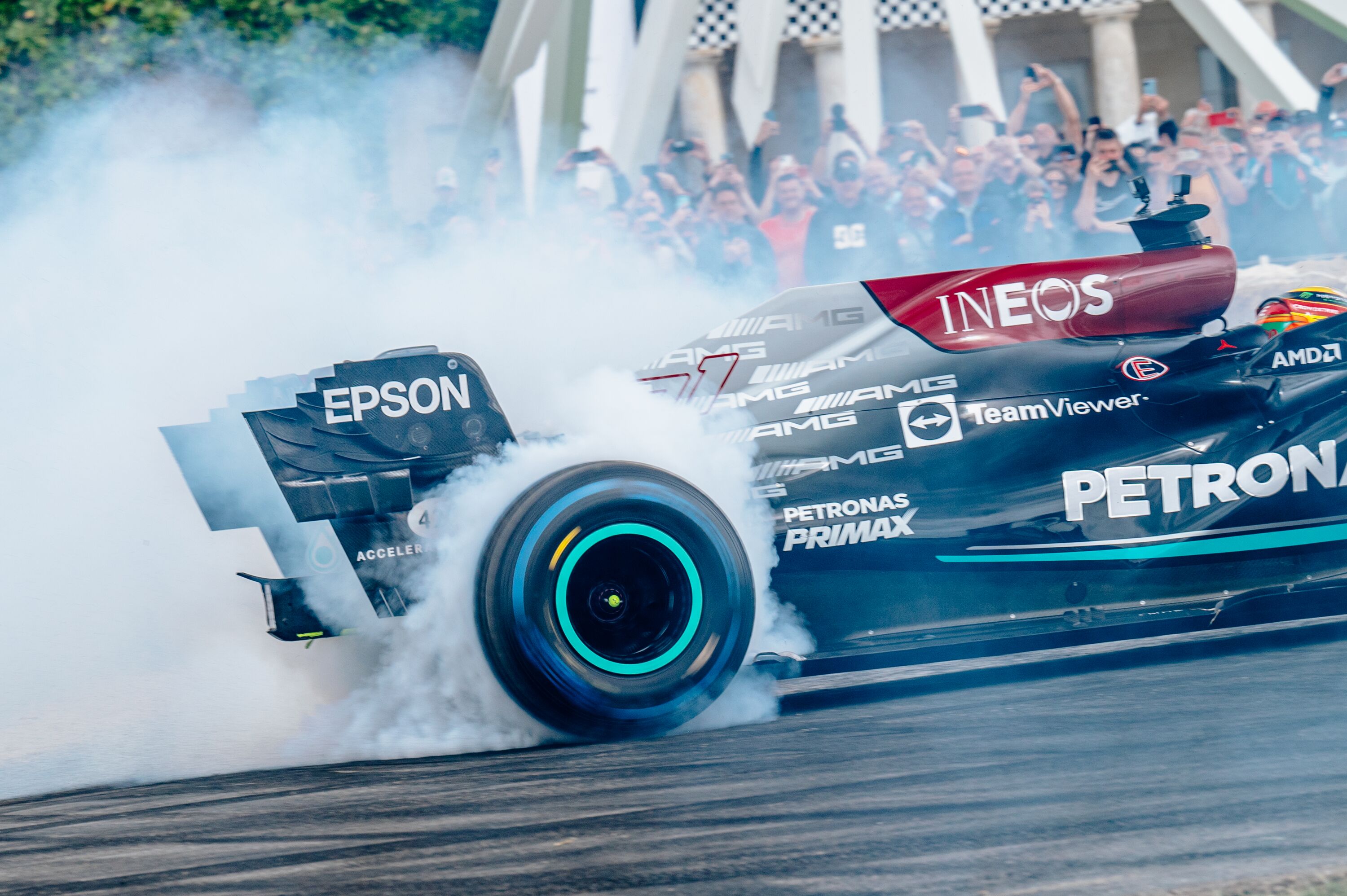Cars that redefined the market | Axon’s Automotive Anorak
Admittedly it’s rare, but once in a while, a new car is introduced that seriously disrupts the market sector it’s aimed at, redefining it in the process. This can lead to unusual feelings of sympathy for rival carmakers that have spent years and considerable resources (both human and financial) investing in an all-new model, only to have their hopes and plans unravel before their very eyes when a new game-changing competitor comes along and spoils any chances of commercial success.
Such was the case 25 years ago when in one fell swoop, specialist British sportscar maker Lotus (perhaps unintentionally) effectively annihilated its affordable two-seater roadster opposition overnight when the revered Hethel carmaker unveiled the Elise at the 1996 IAA Frankfurt Show.

I was there in person for that memorable Frankfurt press conference when the green cover was pulled off the original Elise prototype, to great gasps of awe, approval and spontaneous applause by the often unappreciative gathered press guests. After a few post-Chapman years in the wilderness between the mid-1980s and ‘90s, with changes and frustrating missed opportunities in Lotus’ custodianships by Toyota and General Motors, wheeling out endless evolutions of the aging Esprit (including Hethel’s ambitious in-house development of an all-new V8 engine) plus the acclaimed but marginal front-wheel-drive Isuzu-powered Elan 2, Lotus pulled off a major coup with its new Elise. Here was a clever and innovative lightweight mid-engined sportscar, created in the best Colin Chapman traditions.
Funded and enthusiastically supported by the then-owner of Lotus Cars, as well as Bugatti – the wealthy Italian entrepreneur Romano Artioli – the game-changing new two-seater maintained the Lotus tradition of its naming its models beginning with the letter ‘E’ (Elite, Elan, Europa, Esprit, etc.) with the new sportscar named after Artioli’s (then very young) granddaughter, Elise.
The sad but inevitable news from Hethel last month that the Elise is finally being laid to rest by Lotus after 25 glorious years (along with its costlier Exige and Evora siblings) didn’t come as a huge surprise as this drivers’ delight model has been left to become a little long in the tooth in recent times. Back at its launch in 1996 though, the disruptive Elise was a genuine game-changer, much to the dismay of other sportscar rivals of the era, as diverse as RenaultSport and Caterham.
Love Lotus? Read our list of the six best Lotus road cars.

Overnight the new Lotus turned from game-changer to party pooper, as far as Renault and Caterham were concerned, as the Elise made the then-recent extreme new RenaultSport Spider and home-spun Caterham 21 effectively redundant. The Lotus out-performed and out-handled both of these rivals, and was also more practical to live with and undercut both on price.
Like the RenaultSport Spider (an unusually exotic but impractical mid-engined roadster, initially sold without a windscreen and very limited weather protection), the Elise cunningly employed an advanced and complex all-aluminium lightweight platform ‘tub’, created by NorskHydro. This same alloy tub still serves today's run-out Final Edition Elise and Exige models a quarter-of-a-century later.
Had the Lotus Elise never existed, or been launched some years later, the RenaultSport Spider might have enjoyed quite a successful career as a capable niche sportscar with the substantial backing and vast dealer network of the Renault brand behind it. Alas for Renault though, timing was against it as the then-new Lotus killed-off any chances for the wider, slower, less practical and more expensive Spider to thrive, with the French model always coming a sorry second when compared to the ‘can do no wrong’ Elise.

The same applied to Caterham, the small specialist British kit car maker that had successfully made the immortal Seven for many years, ironically that cult model being an ex-Lotus back-to-basics two-seater, with the production rights sold by Colin Chapman to Caterham Cars in 1973. After almost 25 years of solely building the Seven, in 1994 Caterham boldly moved out of its comfort zone and launched the 21.
Using a modified Seven spaceframe chassis, combined with new, modern GRP wraparound roadster-style coachwork, the front-engined Caterham 21 including a more workable wrap-around windscreen, a folding convertible roof, and even a reasonably-sized lockable boot over the Seven! Early interest and 21 sales were just getting into their stride when the new Elise came along and instantly spoiled Caterham’s party, wrecking the ambitious sportcar’s chances, with just 48 examples ultimately being sold before Caterham reluctantly pulled the plug on its ambitious creation. Oh, what might have been, if Hethel had never introduced the Elise!

Ruining a promising new mid-engined sports car’s career hasn’t been the exclusive reserve of Lotus, however. A dozen or so years ahead of the Elise’s disruptive arrival, diverse small British specialist car maker Panther had unveiled its daring Solo 1, an entrancing rear-wheel-drive coupe with great potential, revealed at an affordable price and powered by a mid-mounted Ford Fiesta XR2 1.6-litre CHV engine. Sadly for Brooklands-based Panther though, Toyota shattered any chances of commercial success for the promising Solo by launching the more mass-market mid-engined MR2 around the same time, realistically killing off the new British model’s chances on the global stage.
Down but not out, a disappointed Panther remained true to its belief in a mid-engined coupe concept, regrouping to dramatically re-engineer the mechanically straight-forward Solo 1 into the more complex (and thus more expensive) Solo 2. The heavily revised Solo 2 of 1989 was now an audacious mid-engined 2+2 with an advanced Ferguson four-wheel-drive system, taken (along with its 2.0-litre motor) from the contemporary Ford Sierra XR4x4. In this new sophisticated form, the Solo’s pricing had elevated some way beyond the Panther’s nemesis, the more humble Toyota MR2, limiting potential sales to a wealthier but more restricted audience, with ultimately just 25 (at most) Solo 2 examples built before Panther went into receivership in late 1990.
Motoring party poopers haven’t only been the preserve of mid-engined sportscar makers, however. Take the famously successful first-generation Ford Mustang of 1964.5, for example. Credited with ‘inventing’ the cult 1960s Pony Car phenomenon in the USA, the Mustang quickly wiped the floor with ‘so-called’ domestic coupe competitors such as the fastback Plymouth Barracuda and AMC’s Rambler Marlin, devasting their sales despite these two sporting coupe rivals being launched ahead of the Ford. Against the might of the Mustang though, the Plymouth and Rambler never really stood a chance…

Other great automotive disrupters/party poopers of the past have included the influential 1959 BMC Mini, created by Sir Alec Issigonis, which set the new small car standard and soon began spoiling the potential of other British entry family car rivals (as well as ‘mightier’ circuit and rallying racers), including the Hillman Imp, Triumph Herald, obscure Slough-built Citroen Bijou, plus even the (more profitable per unit) Ford Anglia to a lesser extent.
Although the Z-back Anglia sold more than one million units, the Mini never made life easy for the technically staid small Ford saloon of 1959. As Britain’s traditional new car market leader for decades, Ford became more uncommonly unstuck in 1982, however, when it replaced its conservative but enormously popular Cortina saloon with the adventurous Sierra. It was a technically outdated rear-wheel-drive aerodynamic hatch which initially alienated too many of the Blue Oval’s traditional loyal buyers, hordes of which turned to Ford’s arch-rival General Motors/Vauxhall with its game-changing front-wheel-drive second-generation Cavalier, more routinely styled and available as a booted four-door, three-box saloon (unlike the early Sierra), as well as a modern five-door hatch. The Vauxhall proved to be an unexpected party pooper for Ford, with Dagenham forced to respond swiftly to address the UK’s early resistance to the Sierra and topple Vauxhall from the top of the traditional family saloon sales charts.
A handful of other game-changing cars have left rivals quacking in their tyre tracks for many years, many simply unable (and often unwilling) to compete with these mighty new machines. These include notable cars such as the benchmark Citroën DS of 1955 (making French rival Renault’s uninspiring range-topping 1950s Fregate look instantly irrelevant and unsaleable for example, which it proved to be, forcing Renault to abandon this prestige market sector completely until the mid-1970s!), as well as the disruptive 1966 Lamborghini Miura (Ferrari taking some time to react) and later 1992 McLaren F1 supercar, which still remains beyond compare in many key areas almost 30 years on.
Expectations for Gordon Murray’s new V12-powered T50, the F1’s spiritual successor, are understandably exceptionally high, and I’m sure the car won’t disappoint, just as the new Lotus Type 131 replacement for the stand-out Elise will have to be quite outstanding, to say the least. After all, with the proud heritage of the Elise in its impressive portfolio, it simply wouldn’t do for underdog Lotus to be beaten at its own game by the sporting products of the larger faceless corporations. The world will be patiently watching and waiting for the release of Lotus’ latest party pooper…
Axon's Autmotive Anorak
Lotus
Elise































































